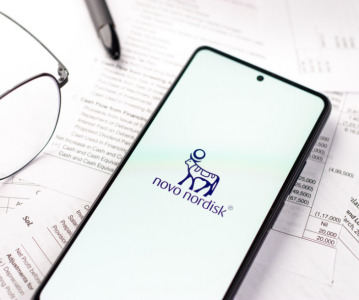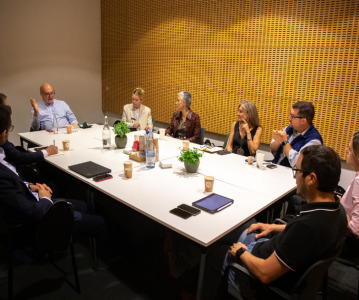Centring the patient experience - What pharma can learn from the consumer sector
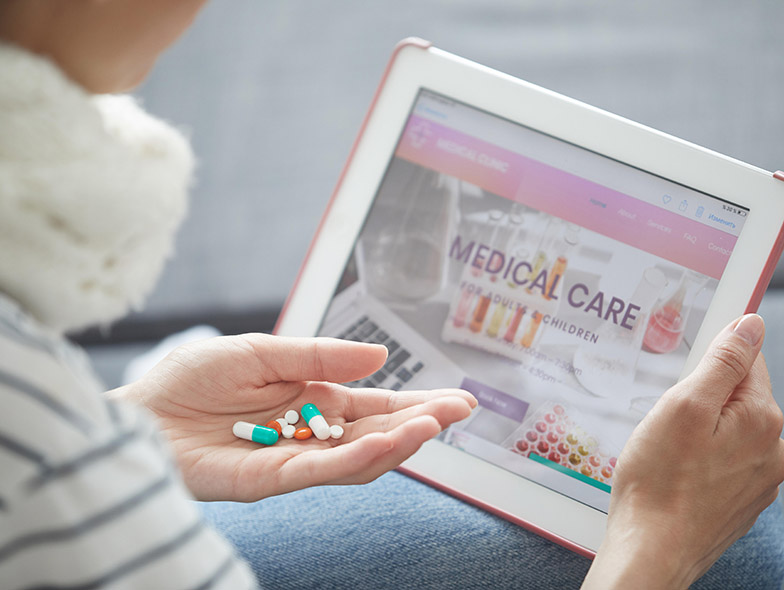
What if unpacking medication could be as engaging as unboxing a new iPhone? Could design cues reassure the patient of drug integrity? Step-by-step opening signal ease of use, or empathetic design reduce patient anxiety?
A positive emotional response to medication packaging could be dismissed as a ‘nice to have’, but there is growing industry recognition that it has the potential to improve onboarding, regimen adherence and - ultimately - patient outcomes.
CPHI spoke with Cambridge Design Partnership’s Clare Beddoes, Senior Insights Research Consultant, and Ben Kubler, Consultant Industrial Designer, about what the drug delivery sector can learn from consumer design. They will explore the topic further at Pharmapack on May 18, 2022.

Ben Kubler and Clare Beddoes from Cambridge Design Partnership
What can the consumer sector teach drug delivery about creating engaging experiences?
The consumer sector excels at using all touchpoints of product interaction to create a compelling user experience to encourage return custom and build brand loyalty. There is an understanding that the first moment of truth – the impression that consumers form upon first encountering a product – can determine their future interaction with a brand.
There are, of course, clear differences between the two sectors: patients don’t ‘choose’ to have a condition and rarely have the option of which medication they will use. Managing a chronic condition that requires long-term medication, for example self-injection at home, can be incredibly daunting for a patient, from starting out to maintaining lifelong adherence. For pharma, the value of building a positive experience is less about generating brand loyalty than in the consumer space. The key focus is improving patient outcomes by assisting them at every step of their condition management.
Consumer companies that excel in user experience are nudging their way into the health sector and streamlining the patient experience – Amazon’s acquisition of PillPack is a standout example. Faced with potential disruption, building a brand experience could provide differentiation for pharma companies, particularly those coming under pressure from patent expiry.
Could you share examples of user-centric drug delivery products or solutions that stand out for you?
CIMZIA’s prefilled syringe for adults with active rheumatoid arthritis, from US biopharmaceutical company UCB. The pack is an easy-to-open ‘book style’ where each panel communicates key aspects of the medication and the devices the patient will use. The device design thoughtfully addresses the reduced motor skills common among its users. A rounded finger loop makes the cap easy to remove and the finger grip uses OXO Good Grips technology to help patients steady the syringe.
A more recent example is Vyleesi, an injectable used to treat low sexual desire in premenopausal women. However, its packaging and website have the look and feel of a beauty brand rather than a prescription drug. A woman must inject Vyleesi 45 minutes before sexual activity, and the almost luxury boxing recognizes that how she feels while doing this will contribute to her overall experience.
How can packaging guide users during their journey, from onboarding to successful regimen adherence?
It is vital to take a step back and fully understand the needs of patients: What condition is being treated? What other conditions are they managing? What challenges do they face? What support do they need? How does that support change as their experience with the product matures?
As well as functional considerations, packaging can speak to the vast range of emotions intertwined with chronic illness. Even something as simple as guiding the patient through unboxing can help reassure, reduce stress levels and create a positive association. This can be done, for example, by revealing new information at each unfold. In the consumer sector remote heating control company Nest does this well, with each step of its unboxing showing the next bit of kit to complete the set-up process.
What does it take to unify physical and digital components and convince users of connectivity’s benefits?
Packaging design plays an integral role in supporting the benefits of a connected drug delivery device. It is the first thing that a patient engages with when starting their treatment and can be a powerful tool in relaying what to expect from connecting their device, as well as the benefits of engaging with a digital experience.
Any connected benefit must bring continually evolving value to the consumer, otherwise it will be something that they either ignore or quickly stop using. Understanding this value is critical to designing a unified experience, as it grounds the digital design in user needs. The needs and value may change depending on where the patient is in their treatment journey, but the beauty of a digital experience is that it can be personalised and developed to match any given stage.
Patients are not just ‘patients’. They (we) are people. We’re all consumers with diverse needs, and we need to ensure that connectivity in drug delivery accommodates this. There will be digital natives who will actively expect an app and those who are tech averse. The packaging of those devices must always cater to both while selling the value of connectivity to those on the fence.
How can the drug delivery sector get even better at considering patient user experience?
Many pharma companies recognise that elements such as packaging play more than a functional role in protecting the integrity of medication.
However, acting on this can require a mindset shift for companies, both large and small. Our advice when it comes to packaging in particular ranges from small wins to long-term planning.
Small wins are changes you can make to packaging with minimal disruption to manufacturing lines –something as simple as adding a new panel to make a package easier to open or printing a reassuring message. Imagine you are unboxing a new injection device, and the first thing you see is an empathetic message saying, ‘You’ve got this’. Now imagine the first thing you see is a tightly folded leaflet of small print on regulation. How do you feel in each case?
Long-term planning could involve a cohesive platform approach to packaging and digital that sits across all products to ensure a consistent user experience.
Throughout the design of any drug delivery product it’s key to remember that patients are also consumers with expectations based on this ‘role’, and the consumer sector has set the user experience bar very high indeed.
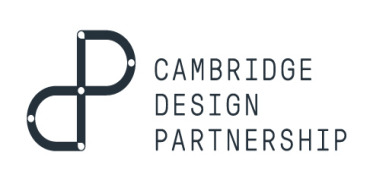
Related News
-
News Pharmapack Awards 2024 Patient-Centric Design Award Winner – Dr Ferrer BioPharma
The 2024 Pharmapack Awards celebrated the best in innovation and design for the pharmaceutical packaging and drug delivery industry on January 24, 2024. -
News Pharmapack 2024 - From the Floor
Paris once again welcomes Europe’s leading trade show in pharmaceutical packaging and drug delivery innovation. Join our content team as Pharmapack 2024 opens its doors to leading experts and innovators in pharmaceutical packaging and drug delive... -
News On Track at Pharmapack 2024 - The Track Sponsor interview: BD Pharmaceuticals
January 2024 brings both a new year and Europe’s leading packaging and drug delivery event. Bringing the world’s experts in pharmaceutical packaging together in Paris, France, Pharmapack 2024 brings exciting opportunities to learn and colla... -
News CPHI Pharma Awards 2023 – API Development and Innovation Winners: Snapdragon Chemistry, a Cambrex Company
After another year of impressive nominations for the CPHI Pharma Awards our winners were announced at CPHI Barcelona in October. In this series of interviews, we speak to the teams behind the award-winning projects, concepts, and technologies. -
News PharmaKure gains authorisation for next stage testing on Alzheimer's treatment
Clinical stage pharmaceutical company PharmaKure gains permission from UK authorities to enter into further testing for PK051 for the treatment of patients with mild cognitive impairment associated with Alzheimer's disease. -
News New Novo Nordisk AI hub for drug discovery to open in London, UK
Danish pharmaceutical giant Novo Nordisk will be opening an AI-based research facility in the heart of London to advance drug discovery operations. -
News Navigating the Future: Challenges and Opportunities in Pharma Innovation and Investment – CPHI Barcelona 2023 Roundtable Report
In this comprehensive downloadable report, hear from a range of experts in finance and investment in the pharma industry on what investment trends will be shaping the future of the industry, in Catalonia, and the wider world. -
News BioNTech to begin mRNA vaccine manufacturing in Rwanda by 2025
German biotechnology company BioNTech has stated their intentions to begin production at their mRNA vaccine factory in Rwanda by 2025, which will mark the first foreign mRNA vaccine manufacturing site on the continent of Africa.
Position your company at the heart of the global Pharma industry with a CPHI Online membership
-
Your products and solutions visible to thousands of visitors within the largest Pharma marketplace
-
Generate high-quality, engaged leads for your business, all year round
-
Promote your business as the industry’s thought-leader by hosting your reports, brochures and videos within your profile
-
Your company’s profile boosted at all participating CPHI events
-
An easy-to-use platform with a detailed dashboard showing your leads and performance
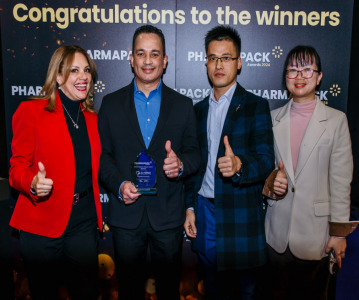

.png)


